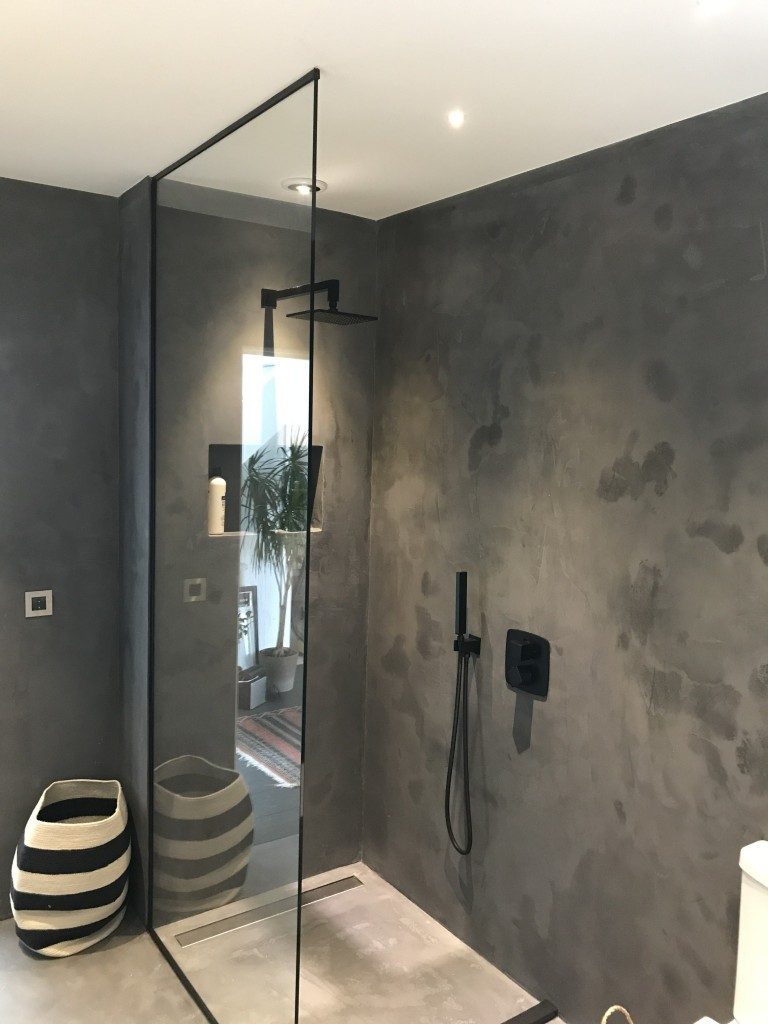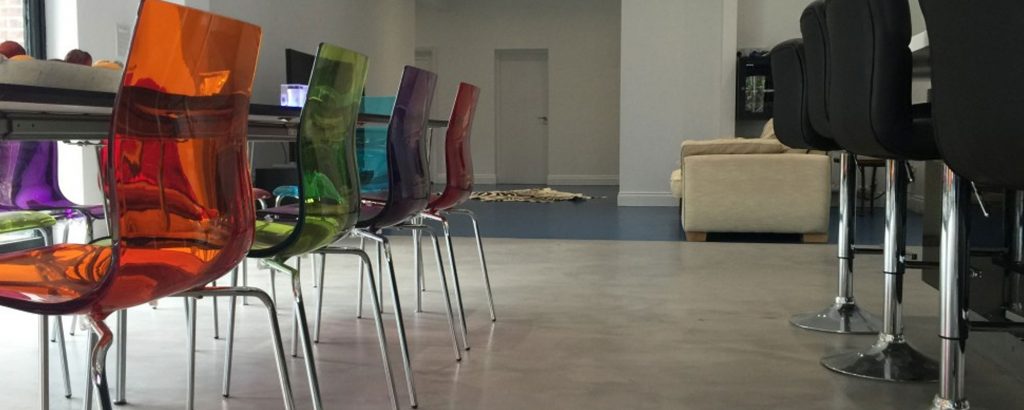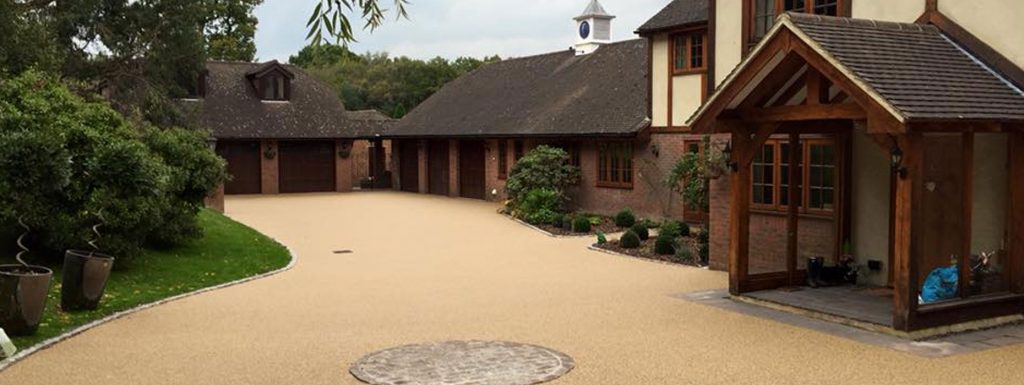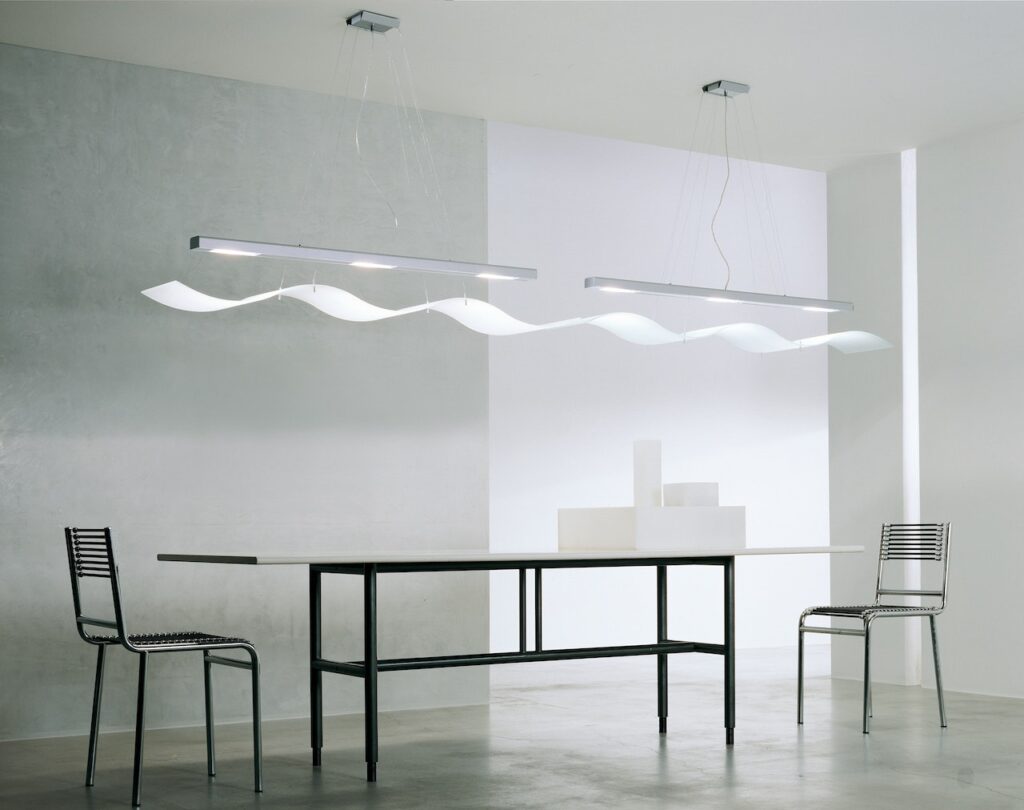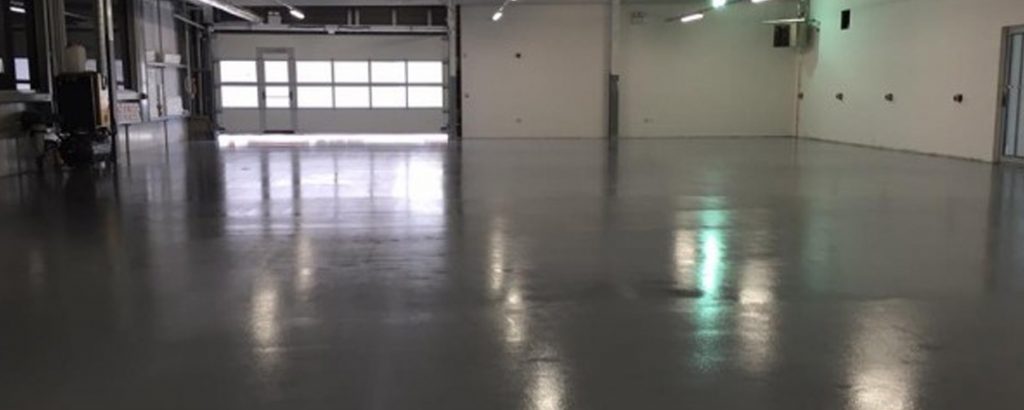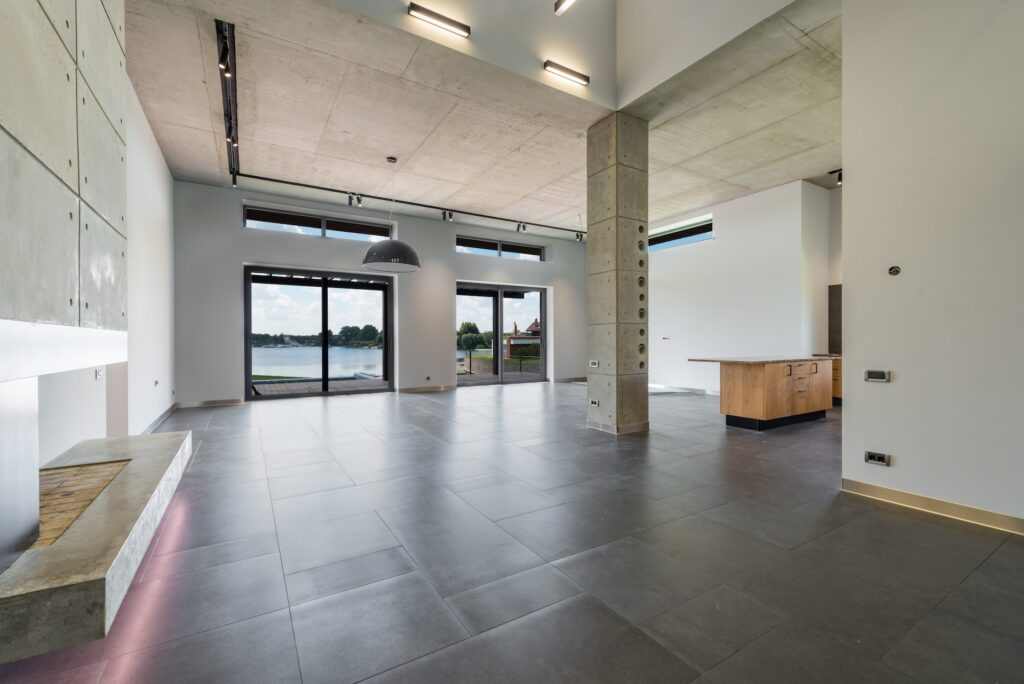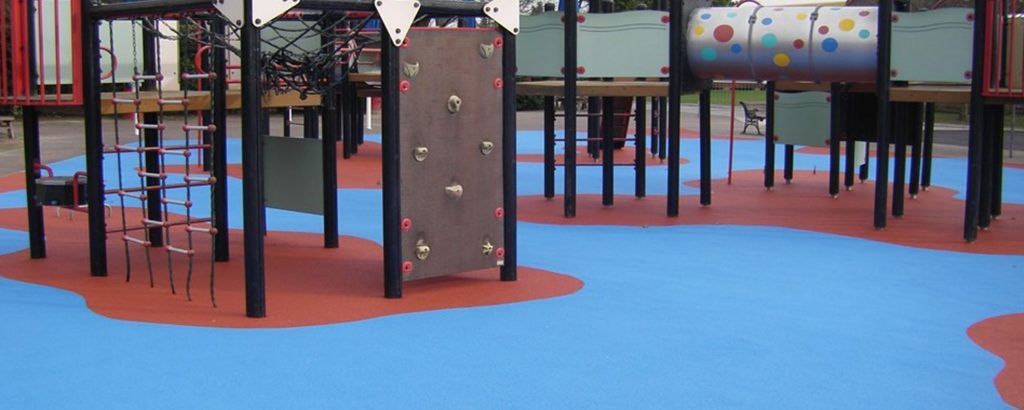Updated: March 2023
Microcement, also known as micro-screed or micro-concrete, is a polymer modified cement-based coating which can be applied thinly to walls, stairs and floors in domestic and commercial environments. As a result of strong bonding power, microcement can be applied to almost any surface including wood and tiles, and existing concrete flooring surfaces.
Looking for a free microcement floor quote?
Fill out our contact form with more details about your flooring requirements and we’ll get in touch with a more accurate, no-obligation microcement cost.
Microcement summary
- Modern, industrial look and concrete aesthetic
- Choice of colour, tone and finish
- Less prone to cracking
- Hygienic and hypoallergenic
- Anti-slip
Microcement has become an increasingly popular material amongst interior designers, homeowners and business owners looking to achieve an industrial interior and concrete aesthetic where it would not normally be possible. It is perfect for those wishing to achieve a completely seamless floor finish that is grout-free and aligns with contemporary and modernistic trends. Microcement is a great option for kitchens, living areas, bathrooms and wet rooms because of the ability to completely customise the material in terms of colour, tone and finish. The material also lends itself well to functionality and practicality by offering hygienic and hypoallergenic properties to create a clean and stain-free surface environment. Furthermore, clients can benefit from anti-slip properties which are ideal for environments where children and the elderly will be frequent visitors and high traffic loads will be present.
Microcement vs polished concrete
What is great about microcement flooring (something you don’t get with traditional polished concrete flooring) is you’re able to see and choose the colour, tone and finished design of your flooring system before it is installed. This means there are no unexpected design and/or flooring failures which often arise after installing polished concrete.
Furthermore, the flexible nature of microcement means the material is less prone to cracking, when installed on an elastic mortar layer, which is one of the significant downfalls often associated with concrete floors. As such, clients can expect longevity, durability and a hardwearing flooring system.
Where domestic environments are concerned, there is no problem if at a later date you choose to redecorate or renovate the living area in which microcement has previously been installed. Microcement is highly versatile meaning you’re open to change your mind in the future if you wish to alter the colour, tone and/or design finish of your flooring system. What is more, if you decide in later years that your microcement flooring isn’t in line with your current interior design or the latest trends, you have the option to install almost any flooring system on top of microcement.
Microcement Applications
There is a diverse range of uses for microcement, from cladding modern furniture to installing flawless flooring surfaces, bathrooms, outdoor terraces, kitchens, swimming pools and stairs. The bespoke nature of your finish makes this material wholly individual, based on the space and the aesthetic you wish to achieve.
Microcement can cover any surface, from small, precise countertops in kitchens to large floors, without any joints or lines that can trap bacteria and dirt, require ongoing cleaning, or present a potential health hazard in commercial or public environments.
The finished surface can withstand pressure and heavy foot traffic and is suitable for professional cleaning, with a chemical resistance that means the microcement will not fade, degrade, or show signs of wear after a short period.
Using Microcement for Walls
Microcement is thin and applied in layers with remarkable bonding properties that make it suitable for almost any surface, including tile or wood. Using microcement on walls or facades enables you to renovate old wall coverings quickly, with an impeccably smooth finish, with minimum preparation.
Microcement for Flooring
The continuous, flowing lines of a microcement floor are elegant and streamlined, providing a robust, tough, and long-lasting surface suitable for commercial or private properties, with a vast range of colours and finishes to match your décor or branding.
Designing Kitchens and Bathrooms With Microcement
Flexflooring often works with clients who need to find the right material to refurbish bathrooms or kitchens or add a touch of personality and luxury to a new build without requiring ongoing upkeep. Tiles are the most common option but take significantly longer to install, are exposed to cracking or breakage, and often command annual re-grouting as the joins between each tile attract dirt and germs.
Microcement is resistant to moisture and easy to clean, blending functionality with design for a practical yet beautiful surface for walls, counters, and floors in any size of kitchen or bathroom.
Using Microcement for Staircases
Since microcement can be applied by hand, our skilled installers can apply a smooth, even layer on stairs, using expertise to ensure every step is exactly level, providing an attractive aesthetic with continuous lines and colour.
The Microcement Application Process
Before application, Flexflooring will consult with you to decide on the colours, finish, and design of your microcement surfacing. In most cases, we begin with two layers of a base coat to reinforce the strength of the underlying structure or floor, using larger sand particles to extend durability.
The next phase is to install two finish coats, using a fine-grade mixture to provide texture, tone and depth of colour that feels smooth and ergonomic to touch or walk on.
This layered process means microcement is lightweight and does not impact the structural integrity of an upper-storey floor, such as a bathroom, where dense and heavy traditional concrete may not be appropriate.
Bonded layers provide incredible strength and durability, ensuring each layer of microcement adheres securely to the next. Interlocking aggregates in microcement create increased tensile and compressive strength so we can use them even in busy commercial kitchens or industrial spaces.
Microcement is superior to other finishes, such as plaster and concrete, in design, style, finish, strength, water resistance and flexibility. It is inherently safer and more sustainable, using natural, low-carbon materials to support environmental objectives linked with your build, refurbishment or wider project.
Choosing a Microcement Finish
Each microcement blend is created for the specific job in mind, with adaptable textures and finishes to match your design or provide enhanced slip prevention. Flexflooring can recommend sealants and varnishes to achieve any aesthetic you wish.
Adding a sealer or varnish over the top layer of the microcement provides the waterproof specification and protects the surface from dirt and dust.
Below we list some of the many finishes you can select from:
- Matte finishes are modern and natural, with an appearance similar to stone, with a slightly muted colour that feels calm, organic, and understated.
- Super matte microcement delivers a deeper matt look without any shine or reflections – this is perfect for décor schemes with other gloss surfaces that you wish to capture attention.
- Satin microcement is a compromise between matte and gloss and is extremely popular as a stylised, contemporary surface material that looks smooth and elegant.
- Gloss-finish microcement is bright and bold and provides a marbled effect, bringing the richness of the colour alive and enhancing the impact of your new surface or flooring.
Flexflooring can also prepare a non-slip matte finish where you wish to have a matte microcement surface but need added safety or require a new floor in a bathroom or kitchen with high moisture levels.
Maintaining a Microcement Surface
A professionally installed microcement surface requires minimal maintenance and will remain pristine with a straightforward clean once per week. Industrial or commercial buildings will normally follow more rigorous cleaning schedules and can use any standard chemical or cleaning product.
One of the additional benefits of microcement is that, over several years, if the surface becomes slightly dulled, we can install a supplementary finish layer without any further work and without needing to adjust door openings, given the slimline nature of microcement.
Microcement advantages
- Choices of finish – you’ll be able to choose the type of t finish you require.
- No joins – As explained previously, microcement offers a seamless, smooth surface.
- A range of applications – microcement looks great for interiors on the floor and/or on the walls.
- Handcrafted application – our experienced installers have many years of experience in applying microcement.
- Covers a wide range of surfaces – ordinarily, you would need to remove all flooring before adding a new floor. Microcement can be applied to a range of surfaces such as tile, concrete or marble.
- Longevity – microcement is durable, shock and scratch resistant as well as chemical resistant. This makes for a very durable surface.
- Water resistant – with the aid of a sealer, the surface is water resistant, so it’s great for wet areas such as bathrooms and wet rooms.
- Thin application – the 2-3mm material build up, will not affect the load bearing capacity of the room.
- Natural materials – microcement uses environmentally friendly materials, minimising environmental damage.
Frequently asked questions
- Where can you use microcement? Microcement can be used in a variety of applications and looks great in kitchens, bathrooms, counters, walls, wet rooms and just about any open contemporary space. The finish looks particularly good If you have a large open area such as a kitchen/diner and you are looking for a modern, contemporary finish.
- How do you maintain microcement? One of the best things about microcement is that there are zero joins. Joins in traditional flooring options such as tiles or laminate flooring can trap dirt and grime as well as food and crumbs, making them a breeding ground for bacteria. The smooth microcement finish allows for easy maintenance. You’ll just need to wipe the surface over with water and a very mild detergent with a pH value of over 6. It’s advisable to clean a smaller area first to ensure that there will be no damage or staining. Always use clean cleaning equipment when cleaning your microcement floor.
- Is microcement hard and durable? Simply put, yes. Microcement is incredibly hard and resistant, being suitable for high traffic areas and staying consistent visually for years to come. Being made from cement, microcement is even resistant to the elements, and it will be hard to damage your floors and walls when they are coated with it.
- Can I choose my design? Microcement is designed to give a certain appeal. With a range of different shades and finish options available. Microcement can be used in a host of different scenarios. Microcement gives a chic industrial look and can be finished with a matt or silk finish. Due to the nature of microcement, no two floors will look the same.
- What surface can microcement be laid on? Microcement has been designed to be a very flexible product. You can apply it to concrete, cement, wood, mortar, tiles, plaster, stoneware, metal, plastic, or plasterboard, all will just require different preparation methods.
- Is microcement waterproof? Microcement, once sealed, naturally offers a high degree of stain and water resistance without any sort of treatment. For bathrooms and other spaces which are wet on a regular basis, though, we recommend that you have your microcement treated to obtain complete waterproofing. The texture of microcement can even be modified to ensure that it stays nice and grippy when wet.
- Is microcement hygienic? Grouting lines on traditional tiles or floors would often trap dirt and bacteria. Thanks to the waterproof nature of microcement, along with the fact that you don’t need grouting lines with this sort of material, microcement is a very hygienic product for home use.
- How long does Microcement take to apply? We advise that you wait for a couple of days before placing heavy furniture on the floor, but we would also recommend not dragging heavy objects across the floor and consider rubber ends to chairs etc.. The procedure itself will usually take between three to five days, but this will depend on the size of your room and the complexity of the job being done.
Examples of Microcement
The below examples demonstrate how microcement can be used with domestic and commercial environments and the versatility of the material.
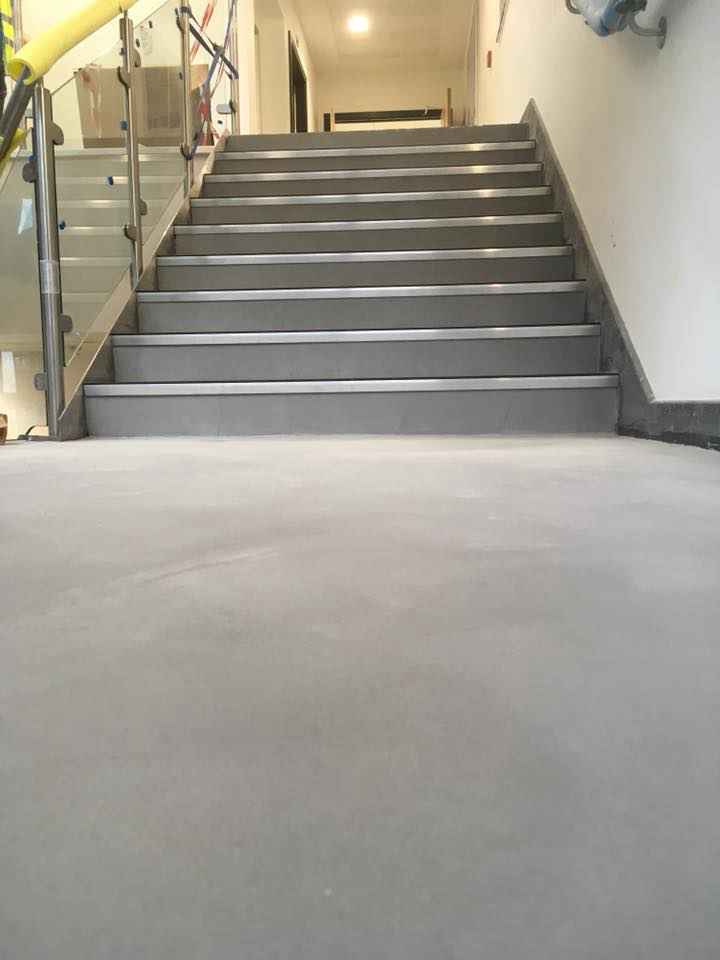
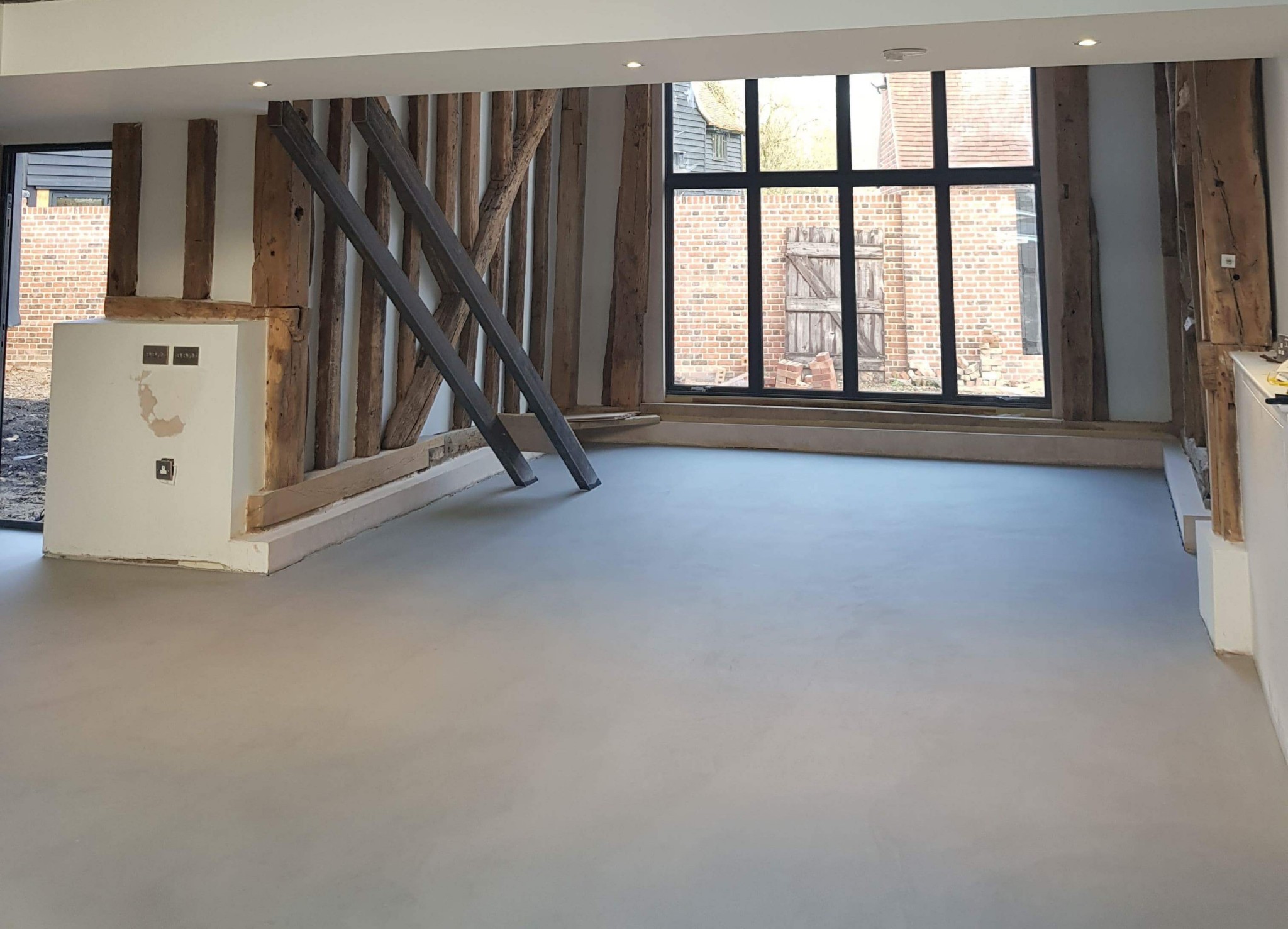
Get in touch for a quote!
[gravityform id=”7″ title=”false” description=”false” ajax=”true”]
Further Reading:

